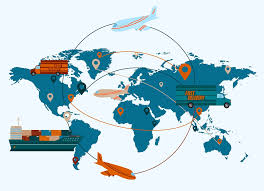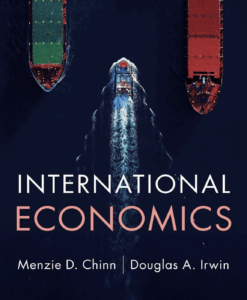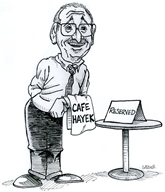Roger Pielke, Jr., reports this great news: “Globally, 2025 has had one of the lowest annual death ratesa from disasters associated with extreme weather events in recorded history.” A slice:
What we can say with some greater confidence is that the death rate from extreme weather events is the lowest ever at less than 0.8 deaths per 1,000,000 people (with population data from the United Nations). Only 2018 and 2015 are close.
To put the death rate into perspective, consider that:
- in 1960 it was >320 per 1,000,000;
- in 1970, >80;
- in 1980, ~3;
- in 1990, ~1.3;
Since 2000, six years have occurred with <1.0 deaths per 1,000,000 people, all since 2014. From 1970 to 2025 the death rate dropped by two orders of magnitude. This is an incredible story of human ingenuity and progress.
To be sure, there is some luck involved as large losses of life are still possible — For instance, 2008 saw almost 150,000 deaths and a death rate of ~21 per 1,000,000. Large casualty events remain a risk that requires our constant attention and preparation.
But make no mistake, 2025 is not unique, but part of a much longer-term trend of reduced vulnerability and improved preparation for extreme events. Underlying this trend lies the successful application of science, technology, and policy in a world that has grown much wealthier and thus far better equipped to protect people when, inevitably, extreme events do occur.
Wall Street Journal columnist Allysia Finley argues that “the scandal of American welfare goes beyond fraud.” Two slices:
Economist John Maynard Keynes suggested that the government pay people to dig holes in the ground and then fill them up. This is an apt metaphor for progressive government these days: It creates social dysfunction, then shovels out money to correct it. Dredge, fill and repeat.
…..
The goal of the welfare-industrial complex isn’t to ameliorate social problems but to extract more money from the government. Social workers employed by a nonprofit—funded by hospitals and health insurers—spent recent weeks searching for undocumented immigrants to sign up for Medicaid before a deadline that would make them ineligible.
A story in the Atlantic this fall described how drug addicts and the mentally ill have been cycling in and out of California hospitals. Every emergency-room visit, typically covered by Medicaid, means more money for hospitals. It’s no coincidence that hospitals are the loudest opponents of Medicaid reforms.
California’s Medicaid spending—which pays for Native American exorcisms, music lessons, cooking classes and many other nonmedical services—has ballooned by nearly 50% over the last two years. “Healthy living starts with a chef in your kitchen. Paid by Medi-Cal,” one company advertises. A state audit last month flagged it as high risk for fraud, waste and abuse. You don’t say.
Say this for a union-backed ballot measure that aims to tax the wealth of billionaires to boost spending on Medicaid: It might awaken wealthy liberals to the welfare racket that masquerades as a public service.
GMU Scalia Law’s Ilya Somin offers sensible thoughts on the “capture of Maduro and Trump’s attack on Venezuela.”
Max Skjönsberg reflects productively on F.W. Maitland’s productive reflections on Adam Smith and trade. A slice:
Smith’s still valid argument for free trade was more skeptical and levelheaded than Bastiat’s theory of harmonious interests. In Maitland’s interpretation, Smith’s main point was that government interference failed to achieve the desired results, partly because of rent-seeking, but also because of the government’s inevitable lack of sufficient information (a view we more often associate with Hayek). Smith’s real service had thus been to show that government meddling with trade had been futile or even hurtful. His followers in the nineteenth century extended this insight to government interference in general. According to Maitland, this position was more solidly grounded in the limited knowledge of political leaders rather than the harmony of interests.
Maitland was sympathetic to the principle of what he called laissez-faire, as long as it did not rest on any notion of harmonious interests. In this way, he connected his discussion of economic policy with religious politics. “Religion and commerce seem ideas widely removed from each other, but yet in the eye of the statesman they have points in common,” he wrote. First, laws regulating commerce and religion were often futile, as it is too easy to smuggle goods as well as express forbidden opinions. Second, interference on the wrong side can produce the worst effects, by causing starvation or preventing the spread of truth. Third, it is very likely that government interference will be mistaken because of the lack of knowledge. Maitland concluded: “The most convincing pleas for laisser faire, and the most convincing pleas for religious toleration, are those which insist a priori on the great ‘probable error’ of any opinions on matters of religion, and matters of political economy, and those which relate a posteriori the history of the well-intentioned failures of wise and good men.”
Many of these arguments later became key to Hayek’s critique of central planning. Hayek was clear that individuals have diverse and often competing aims, which means that interests frequently clash. For Hayek, diverse interests could be best coordinated via the price system, whereby various actors communicate and reach compromises. The price system, rather than government interference, is the proper mechanism for coordinating competing interests, because of the impossibility of government officials possessing enough information to organize the different parts of the economy effectively. The emphasis on the coordination of clashing interests rather than natural harmony is also arguably a more fruitful way of understanding The Wealth of Nations. Maitland’s reading of Smith thus helps us to disentangle the more realistic elements from the utopian strands of the classical liberal tradition.
Here’s the abstract of a new paper by Viral Acharya and Toomas Laarits (emphasis added): (HT Scott Lincicome)
We explain how the “Tariff War” shock of April 2025 affected the safe-asset status of US Treasuries. Convenience yield erosion for long bonds is consistent with a reduction in the hedging property, reflected in a rising stock-bond covariance. Decomposing the Treasury yield into risk-free rate, credit spread, and convenience yield components reveals that covariance due to the convenience yield component increased for long bonds. The short end of the Treasury curve, however, continued to exhibit the safe-asset hedging property. These effects are consistent with a withdrawal of safe-asset investors from long-term Treasuries and a rotation towards shorter-term Treasuries and gold.
Mitchell Bahnsen is correct: “The threat to the modern media landscape isn’t Netflix or Paramount — it’s regulation that protects incumbents and strangles competition.” A slice:
As free markets come under fire from the political right as well as the left, it has become fashionable in Washington to be suspicious of mergers that could reduce competition, thereby leading to higher prices, fewer options for consumers, and weaker incentives to innovate. In the media sector, it is argued that vertical integration — unified control of content’s production and distribution — risks creating barriers to entry for smaller studios or streaming platforms. This would allow dominant firms to dictate terms to filmmakers, theaters, or talent agencies. Critics also argue that large, oligopolistic media firms would be risk-averse, relying on existing franchises instead of backing new creators. Even if they do innovate, it may be more defensive or incremental relative to the disruptive creativity of newer entrants.
The problem with such criticisms is that, for the most part, they assume that the media market is static and unchanging. That is an assumption that overlooks how quickly the marketplace can change, an odd thing to disregard given how rapidly the rise of streaming services like Netflix disrupted traditional entertainment media. The same dynamism that restructured the entire media landscape over the course of 15 years can also uproot a large corporation’s market share, even after an acquisition that makes it appear “too big to fail.”
The Austrian political economist Joseph Schumpeter famously argued that one of the components of an effectively functioning capitalist system is capitalism as creative destruction, the process by which a new product or service — or even a whole way of business — can disrupt an entire industry based only on what best meets the consumer’s needs. It is a common phenomenon, as markets are reorganized through waves of disruption, old business models collapse, and new industrial configurations emerge. The rise of streaming and the associated decline of legacy television, cable, and moviegoing are the result of technological innovations that consumers preferred over their predecessors.
Mergers are typically the response to such market changes, not the cause of them. Preventing consolidation could freeze industries rather than allowing them to transform, while the strengthened market power or even “temporary monopoly” that mergers create can encourage innovation from challengers, not the reverse. As Schumpeter points out, “In capitalist reality as distinguished from its textbook picture, it is not the large firms that hamper progress. . . . On the contrary, they are the most powerful engine of progress . . . because they are in a position to finance innovation on a large scale and because they have something to lose: the gains from temporary monopoly.”
Mark Perry remembers that “the ‘warmth’ of collectivism in East Germany was so intense that they had to build a wall to contain it.”


 There is a parable about an entrepreneur who invents an amazing machine. Wheat, soybeans, lumber, and oil are fed into one end of the contraption. As if by magic, smartphones, coffee, and tea, and all manner of clothing and apparel come out at the other end. The inventor is praised as a genius – until further investigation reveals that the wheat and the other inputs were being secretly shipped to other countries in exchange for the electronics and apparel that later emerged. When this news is made public, the inventor is denounced as an unpatriotic fraud who is destroying jobs.
There is a parable about an entrepreneur who invents an amazing machine. Wheat, soybeans, lumber, and oil are fed into one end of the contraption. As if by magic, smartphones, coffee, and tea, and all manner of clothing and apparel come out at the other end. The inventor is praised as a genius – until further investigation reveals that the wheat and the other inputs were being secretly shipped to other countries in exchange for the electronics and apparel that later emerged. When this news is made public, the inventor is denounced as an unpatriotic fraud who is destroying jobs. There may still be some advantages in locating manufacturing close to the R&D or design center where a product originates; but this is just one of the many factors that influence the design of what is now called the “supply chain.” Usually, other considerations – such as wage rates of production workers, tax regimes, proximity to markets, supplier networks, and complements – dictate that much of the manufacturing takes place in locations far removed from where the technology originates.
There may still be some advantages in locating manufacturing close to the R&D or design center where a product originates; but this is just one of the many factors that influence the design of what is now called the “supply chain.” Usually, other considerations – such as wage rates of production workers, tax regimes, proximity to markets, supplier networks, and complements – dictate that much of the manufacturing takes place in locations far removed from where the technology originates. Or think about your smart phone. Where was it made? The back of an iPhone will tell you that it was designed in California and assembled in China. However, in that process, hundreds of individual parts were sourced from all around the world. The flash memory came from Toshiba in Japan, the application processor was supplied by Samsung in South Korea, the camera module was put together by Infineon in Germany, and the Bluetooth hardware came from Broadcom in the United States. The cost of assembling all of the components sourced from around the globe is a small fraction of the total cost of the phone.
Or think about your smart phone. Where was it made? The back of an iPhone will tell you that it was designed in California and assembled in China. However, in that process, hundreds of individual parts were sourced from all around the world. The flash memory came from Toshiba in Japan, the application processor was supplied by Samsung in South Korea, the camera module was put together by Infineon in Germany, and the Bluetooth hardware came from Broadcom in the United States. The cost of assembling all of the components sourced from around the globe is a small fraction of the total cost of the phone.
